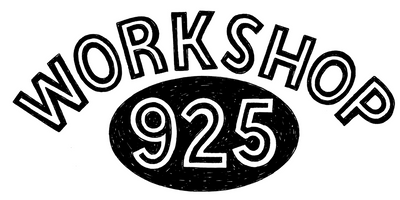As with everything you tackle in life, it’s the starting point that is the toughest. The internet is a great resource, but it is packed with opinions and conflicting information, to the point that it can actually become confusing, and you often get clouded and even put off.
Every tutor is different in their approach to helping you get started, but we thought this might be a helpful guide for those who are looking to make jewellery, from our perspective at least – be it a hobby, a career, or just as an occasional creative outlet.
Generally, when starting, you want to get a really clear understanding of the key skills of jewellery making…. soldering, piercing, how to form the metal, how different thicknesses of metal behave etc. This will really benefit you within every project your tackle. From there it is important to develop further with each project you choose while continuing to practice the core skills of jewellery making. It’s easy to stay in your comfort zone, but aim to push yourself a little further with each project you take on.
For the complete beginner we usually suggest our weekend Stacking Rings course. It’s 3 hours long so gives you a really good feel for jewellery making if you have never done it before without having to commit to a full day. You will cover a range of techniques – ring sizing, soldering, texturing the silver and polishing. From here, you can decide if jewellery making is for you.
You can continue on our other beginners classes developing new skills, spinner ring making, design and make a cocktail stirrer, bangle making, earrings and pendant making, stone setting, wax carving, etching, chain making, fold forming, sand casting, threading and knotting, and spoon making etc. These weekend classes are great for helping you develop your skill set.
You can also join a term time class (we currently have a waiting list, so you might have to wait for a space to become available). Term time classes are a great places to share project ideas, be inspired by others and to develop new skills over a period of weeks, months, years… however long you decide to stay with us. During term time classes, you work upon your own project ideas under the guidance and support of your tutor.
Our term students, tend to follow their own preferences and wishes as they learn, and we gently guide them to develop new skills along the way. Every student is unique and will have preferred projects and a preferred direction. Some students are really drawn to geometric designs and stone setting, while others like organic jewellery – casting, fold forming, and textures. We try to get to grips with each student as an individual and work with them to develop from there.
Generally ring making is a fantastic introduction for a new student to understand the key essential equipment of jewellery making so it doesn’t feel alien to them and then we lead then to other aspects of making such as chain making, which is a great lead on project to develop essential soldering skills as you can work with a variety of metal thicknesses to get an understanding of how the different metal thickness behave and how they react during soldering. From here we might suggest learning how to create a bezel stone setting if stone setting is of interest as it helps you gain an eye for detail and how important measuring and soldering heat control is. If you enjoy stone setting, a next step would then be to introduce you to tube setting and flush setting.
We find it useful to encourage piercing out metal alongside projects (aka cutting out your metal with a saw) as using the saw is very important, and it takes a bit of getting used to, many broken saw blades, and a few naughty words, but tackle it head on and suddenly you get to grips with it; as much practice as possible along the way is a massive benefit for developing good hand control and an eye for detail.
We then generally then try to introduce students to a range of new techniques to try including fold forming, water casting, granulation, golf leaf, oxidising, fusing, press forming, resin, firstly so you know what techniques exist out there, but secondly to help you find your style and techniques you enjoy. Some students are very drawn to some techniques and not others, and that is ok, it is what makes us unique, we therefore will not force projects on students for that reason, but may encourage you try new things, and will try ease you forwards.
We have a range of Pinterest boards to help inspire ideas including beginner project ideas.




